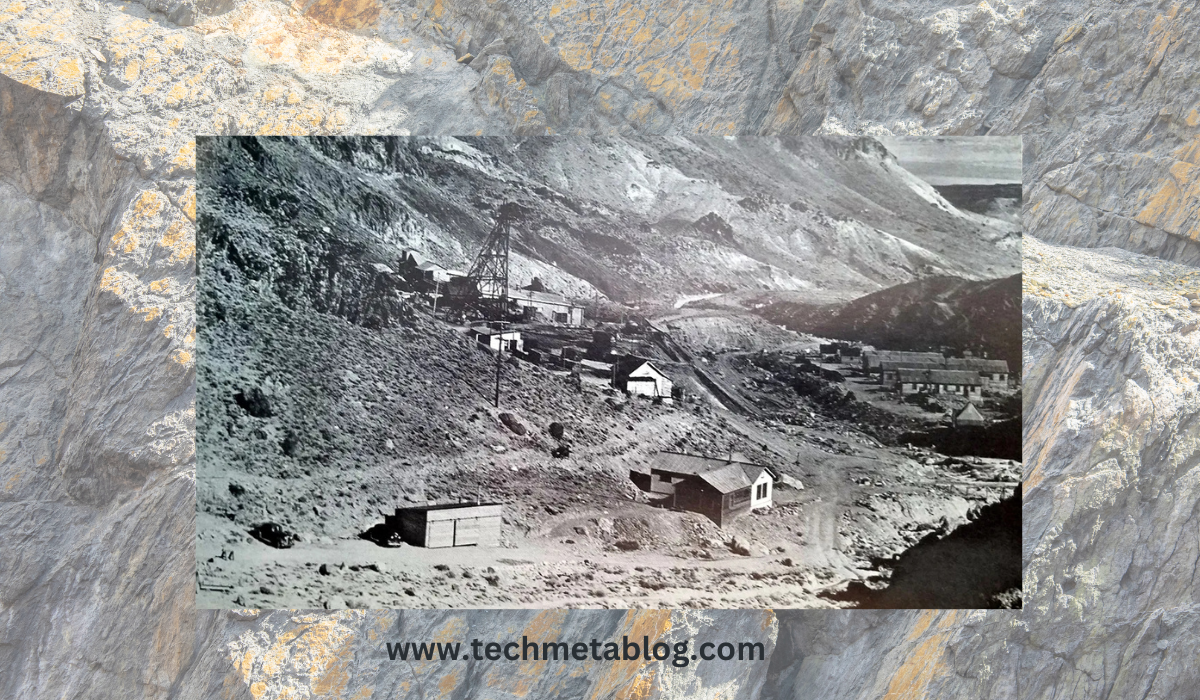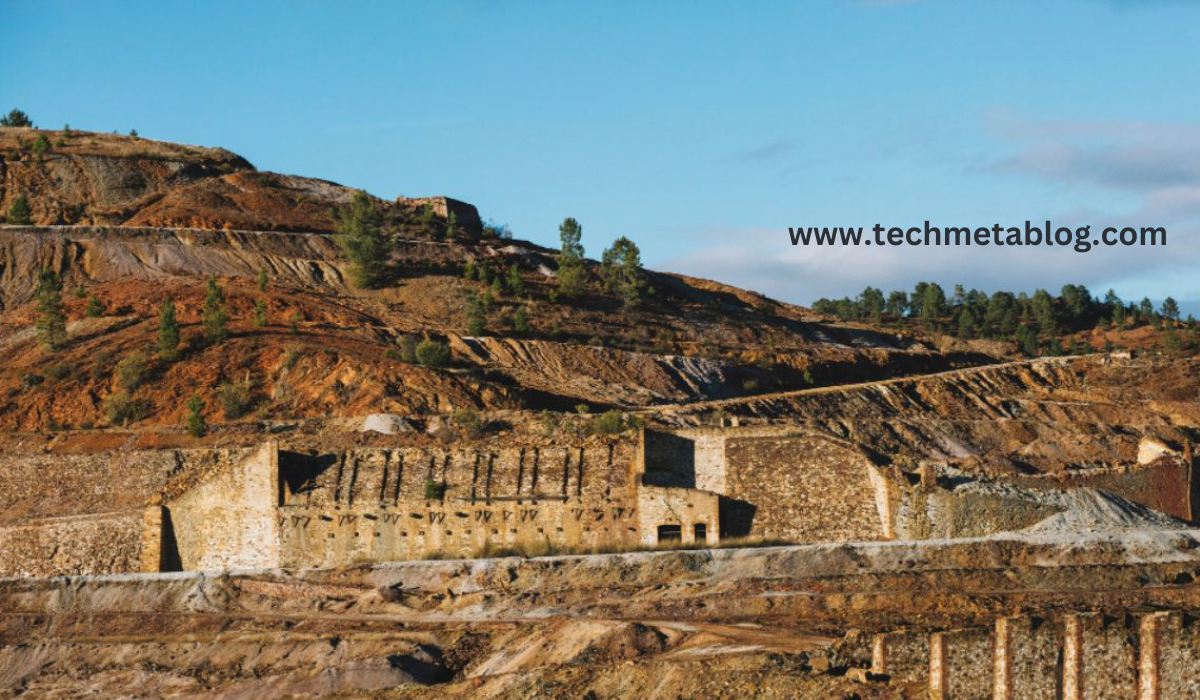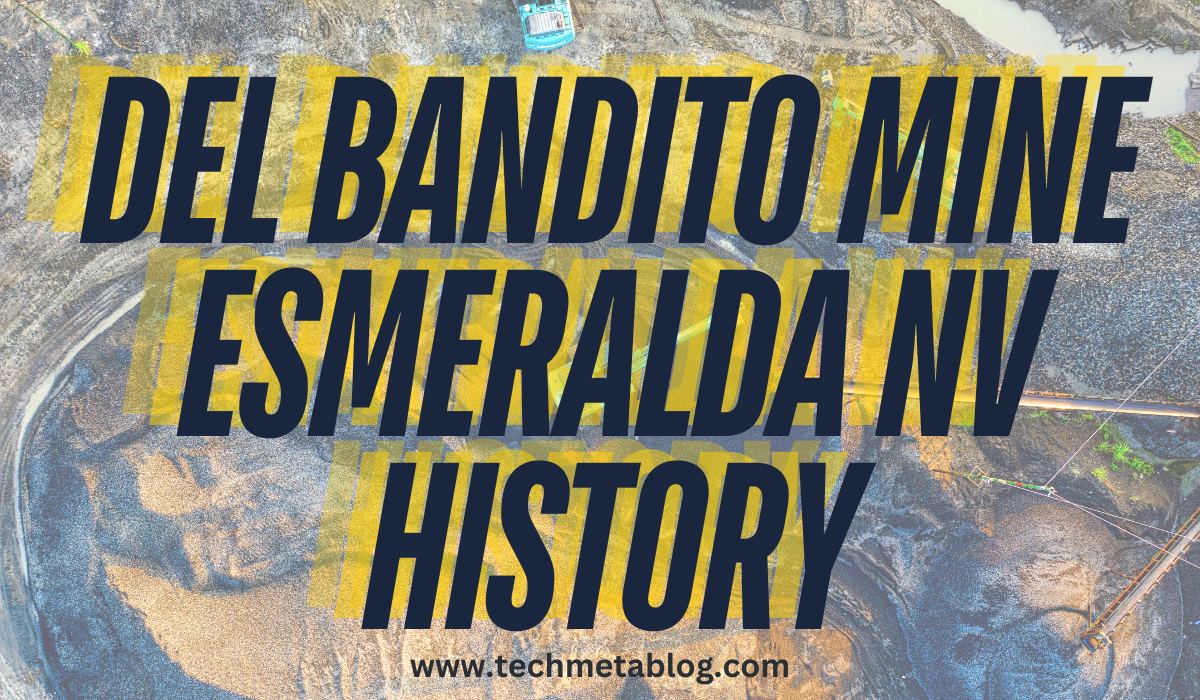This is a very interesting part of American mining history. The Del Bandito Mine in Esmeralda County, Nevada, reflects an ordinary chapter from the rich tapestry of American mining history, mainly because this mine had been established during the silver and gold rushes of the late 19th century. This mine not only powered the local economy but also greatly participated in the larger context of industrial development in the American West.
One part of the Nevada mining history, the Del Bandito Mine Esmeralda NV History, represents a productive establishment of an important geological site from initial discovery and economic fluctuations through changes of ownership to its strategic importance. The article is a review of the history of the Del Bandito Mine by its historical value and economic influence, with a gradual consideration of the pattern of mining in Esmeralda County.
Del Bandito Mine Esmeralda NV History:
The Discovery Era
The Del Bandito Mine’s history dates back to the late 1800s. In a short period of time, explorers and mineral prospectors flourished in Nevada. Prospectors had thus been visiting the area in pursuit of significant fortunes in silver and gold. In 1895, Del Bandito Mine was established, and within a few years, this emerged to be one among the most significant mines in Esmeralda County. The initial success of rich ore found stirred many miners and gradually increased the population of the area.
Even before Del Bandito, Nevada was already considered a treasure for miners with the Comstock Lode. Its reputation as a treasure trove continued to be enhanced by the discovery at Del Bandito. Strategically located in Esmeralda County, near Goldfield, made the mine part of a thriving mining district. According to accounts, the mine’s opening went hand in hand with the general boom in mining in the region. There was this general finding of rich gold and silver deposits.
Economic Impact and Growth
The mine powerfully affected the local economy with such an early success. According to historical records, Del Bandito Mine, by that time, showed to account for large portions of county revenues from mining activities in Esmeralda County. However, the production of the mine varied from year to year, and so in its highest annual output was at about 50,000 ounces of silver in the late 1890s.
| Year | Silver Production (Ounces) | Gold Production (Ounces) |
|---|---|---|
| 1895 | 10,000 | 500 |
| 1900 | 20,000 | 1,000 |
| 1905 | 50,000 | 2,000 |
| 1910 | 30,000 | 1,500 |
This table highlights the productions of the mine, demonstrating its contribution towards the broader context of Nevada’s mining history. The cash spent in the Del Bandito Mine, beyond feeding the local business enterprises, contributed toward the development of infrastructure and other service providers around the area. Increased population led to schools, shops, and other critical services, which spurred the birth of a community in this hitherto arid remote region.
Cultural and social impact
The effects of the Del Bandito Mine on society were socially further reaching than its economic implications. By sending a mining population to that area, the face of the county’s culture was changed. New types of social organization emerged in the churches, community centers, and fraternal organizations that better united its disparate population.
Mining camps usually consisted of groups made out of differences and thus were melting pots as different backgrounds came together, sharing their traditions, languages, and custom. The lifestyle of these camps also played a huge part in bringing attention to the region’s culture and enhancing the community and developing long-term relationships beyond mere mining.
Mining Boom and Its Challenges
Economic Boom
The late 19th and early 20th centuries were the golden years for the Del Bandito Mine. Because of this great demand for silver and gold minerals, it was at the very heart of economic activity, at both local and national levels. Mining towns began to mushroom around the site, offering housing and services for the influx of workers. By 1905, the population of the town of Goldfield had grown to more than 20,000 largely because of mining, again spurred by the Del Bandito Mine.
The economic impact spilled over beyond mere statistics; it altered the face of Esmeralda County. Railroads were built to transport ores and equipment, which made access easier; however, this also helped fuel the economy more directly. Goldfield quickly became one of the richest mining towns for gold in Nevada, and growth was directly tied to success with the Del Bandito Mine.
Decline
But prosperity was not to last. During the 1910s problems began to plague the mining industry: ore grades had grown thinner and operational costs had risen. Del Bandito Mine’s output declined, and by the end of the late 1920s it was plummeting. The economic situation was worsening further with the start of the Great Depression, so that eventually, in 1931, the mine was closed down.
The Del Bandito Mine’s fortunes, however, became the epitome of this crisis during this period for the mining industry as a whole. Several mines in Nevada shut down due to minimal commodity values and heavy production costs. In Esmeralda County, several economic effects from the closing of the mine trickled down since fewer miners stayed, leaving population declines as most of these miners left to search for work elsewhere.
Community Resilience and Adaptation
The closure of the Del Bandito Mine tested the resilience of the local community. Many had to leave Goldfield and its surroundings and seek life elsewhere in hopes of finding better opportunities. Still, it remains to be said that the spirit of resilience continued, and when circumstances changed, so did the way the community operated. Diversification by local businesses bore fruit as some residents started taking up agriculture and tourism as alternative enterprises.
This cultural identification in the Esmeralda County really became popular over time as memories of the mining boom were put to the people’s minds and hearts. Stories of the Del Bandito Mine became parables around the shaping of the county’s economy and remained as subjects for discussions from generation to generation, a form of pride on the history of the region. The legacies of the mine continued and continue to influence the nature of community dynamics, reminding people about their shared heritage.
Resurgence and Current Era
Interest in Revival
Despite being abandoned, Del Bandito Mine never stayed out of mind. During the 1980s, renewed interest in Nevada mining revived interest in reviving the location. Exploration work pointed towards other mineral deposits at the site; but because it was new investments in the area, companies returned to studying geology of the mine with newfound technology that promised access to previously inaccessible resources.
Exploration drilling programs were conducted to assess the possibility of reopening the mine. The gold price was reviving once again during this period; the previously marginal operations could now be economically feasible. These companies were also aware of the site’s historical significance and wanted to develop it while following the latest mining operations methods.
Environmental Problems
Modern mining operations face much tighter environmental regulations than in the past. There is a concerted effort on remediation and restoration of former mining sites, and it is reflective of this growing awareness regarding environment impact as a result of mining-related activities. Del Bandito Mine’s history really becomes a case study in the balance between economic interests and environmental stewardship.
Reclamation is concerned with land restoration and the reduction of ecological consequences of mining. It involves rehabilitation of disturbed land and address issues of water resources in a way that waste generation is minimized. All these activities are meant to preserve the natural environment yet make the space available for sustainable resource extraction.
Educational and Cultural Significance
The Del Bandito Mine is now visited for historical tour purposes and classed as a historical landmark and has managed to keep in place the last few shreds of this old mine. In that respect, it leaves ample scope for education built on the history of this land. Local museums and historical societies give importance to the mine by exhibiting articles and documents depicting the history of the community that served.
Educational programs for schools and visitors clearly place mining in Nevada’s history. They facilitate learning about miners’ struggles and successes, making the appreciation of what was left behind by the Del Bandito Mine richer.
FAQs About Del Bandito Mine
History of Del Bandito Mine
The Del Bandito Mine was one of the stop overs during the Nevada Silver Rush of the late 1800s, mainly extracting silver and gold.
Location of Del Bandito Mine
Del Bandito Mine is found in Esmeralda County in Nevada, near the town of Goldfield.
Minerals extracted from the Del Bandito Mine
The mine mainly extracted silver and gold.
Who have played a crucial role throughout the life of the mine?
The major players here are the original prospectors and owners, though specific names will depend on the time period of the mine’s operation.
What has Del Bandito Mine contributed to the regional economy?
The mine opened up an opportunity for jobs and fueled economic development in the region as it established a workforce and support businesses for the town.
Is Del Bandito Mine currently in operation?
That, as of the last information available, the mine is no longer producing minerals; however, it remains part of history.
Which of the mining techniques was applied at Del Bandito Mine?
Early miners used hand methods, such as using picks and shovels. It was only much later that it evolved to include the use of steam-powered machinery and stamp mills.
What was the impact of the mine on the local population?
It positively influenced population increases, which were the factors that resulted in construction of schools, shops and necessities.
Which environment issues are related to Del Bandito Mine?
The modern practice of mining focuses on reclamation and restoration with minimal ecological degradation and full restoration of land forms.
How is the legacy of the mine sustained?
The Del Bandito Mine has been a historical site because its relics have been preserved and public education services establish its role in mining history.
Conclusion
The Del Bandito Mine, located in Esmeralda County in Nevada, remains one of the largest examples of the mining in the American West. Established when the silver rush was at its height, through decline to revived interest, the mine has tellingly run a course of complexity within the mining world that touched many people in its community.
The Del Bandito Mine has continued to live in the region, economically, culturally, and from an environmental perspective. Through reclamation initiatives and all forms of exploration, the Del Bandito Mine has a legacy in this important chapter in Nevada’s mining history, with all triumphs and all problems.
Works Cited
- Nevada Mining Association. 2023. History of Mining in Nevada. Retrieved from Nevada Mining Association.
- Esmeralda County Historical Society. (2022). The History of Mining in Esmeralda County. Retrieved from Esmeralda County Historical Society .
- United States Geological Survey. (2024). Mineral Resources of Nevada: A Historical Perspective. Retrieved from USGS.
- Goldfield Historical Society. (2023). The Goldfield Mining District: A Comprehensive Overview. Retrieved from Goldfield Historical Society .
- Nevada Bureau of Mines and Geology. (2022). Nevada Mining History: An Overview. Retrieved from NBMG.
- Smith, J. (2021). The Economic Impact of Mining in Nevada. Nevada Economic Review, 45(2), 123-145.
Also read more : 3d659.com blog

